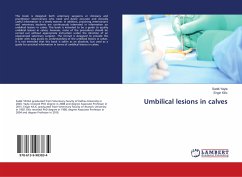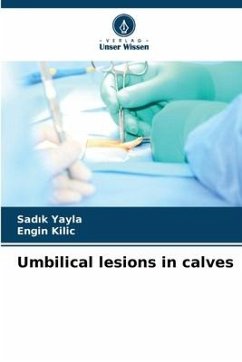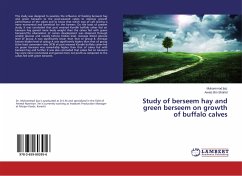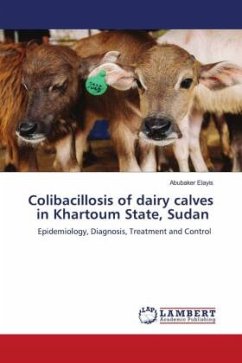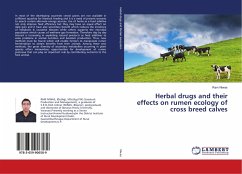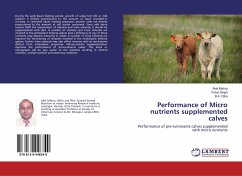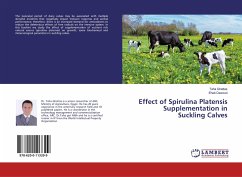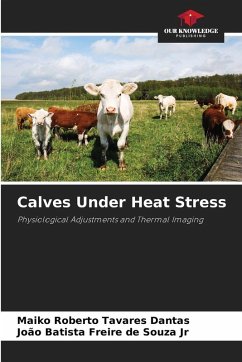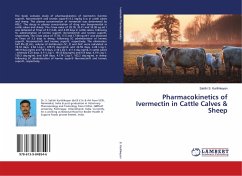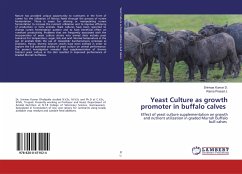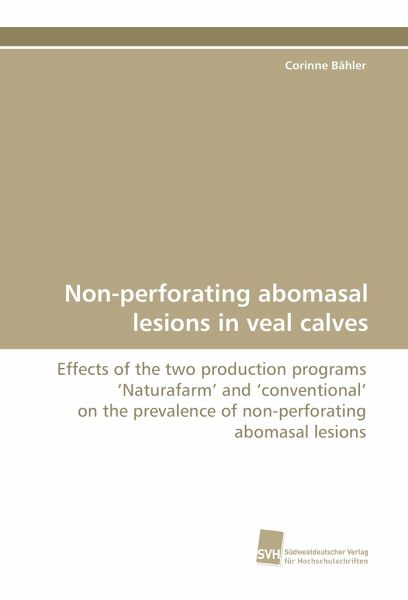
Non-perforating abomasal lesions in veal calves
Effects of the two production programs 'Naturafarm' and 'conventional' on the prevalence of non-perforating abomasal lesions
Herausgegeben: Bähler, Corinne
Versandkostenfrei!
Versandfertig in 6-10 Tagen
36,99 €
inkl. MwSt.

PAYBACK Punkte
18 °P sammeln!
The objective of study was to assess the prevalence of pyloric and fundic abomasal lesions in Swiss veal calves at slaughter and to compare the occurrence of non-perforating abomasal lesions between two different production programs â Naturafarmâ and â conventionalâ . â Conventionalâ -production settings met the minimal standards as defined by the Swiss animal welfare legislation, whereas â Naturafarmâ production complied with increased animal welfare requirements. A total of 125 abomasa were randomly selected in one large abattoir. They were examined macroscopically, and the occurence...
The objective of study was to assess the prevalence of
pyloric and fundic abomasal lesions in Swiss veal calves at
slaughter and to compare the occurrence of non-perforating
abomasal lesions between two different production programs
â Naturafarmâ and
â conventionalâ .
â Conventionalâ -production
settings met the minimal standards as defined by the Swiss
animal welfare legislation, whereas
â Naturafarmâ production
complied with increased animal welfare requirements. A total
of 125 abomasa were randomly selected in one large abattoir.
They were examined macroscopically, and the occurence of
lesions in either the fundic or pyloric region of the
abomasum was recorded separately. Animals raised in the
â conventionalâ -
production setting revealed a significantly higher prevalence
of lesions in the fundic part. Factors significantly
affecting the prevalence of non- perforating lesions in the
fundic part were the
â conventionalâ -production
environment, including missing access to an outside pen,
missing access to water and straw as the only roughage,
feeding by bucket and the liquid milk by-product Protofit in
combination with the powder Sprayfit.
pyloric and fundic abomasal lesions in Swiss veal calves at
slaughter and to compare the occurrence of non-perforating
abomasal lesions between two different production programs
â Naturafarmâ and
â conventionalâ .
â Conventionalâ -production
settings met the minimal standards as defined by the Swiss
animal welfare legislation, whereas
â Naturafarmâ production
complied with increased animal welfare requirements. A total
of 125 abomasa were randomly selected in one large abattoir.
They were examined macroscopically, and the occurence of
lesions in either the fundic or pyloric region of the
abomasum was recorded separately. Animals raised in the
â conventionalâ -
production setting revealed a significantly higher prevalence
of lesions in the fundic part. Factors significantly
affecting the prevalence of non- perforating lesions in the
fundic part were the
â conventionalâ -production
environment, including missing access to an outside pen,
missing access to water and straw as the only roughage,
feeding by bucket and the liquid milk by-product Protofit in
combination with the powder Sprayfit.



